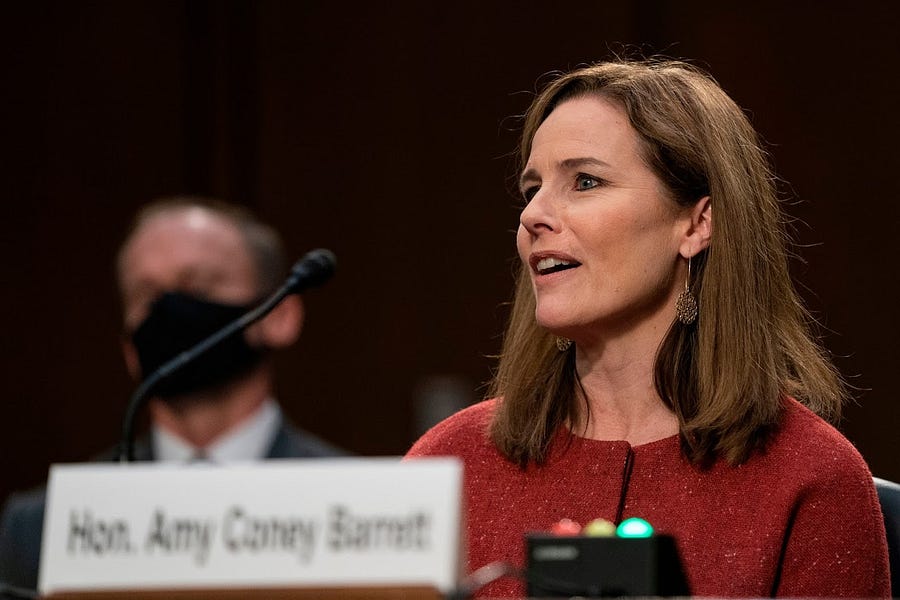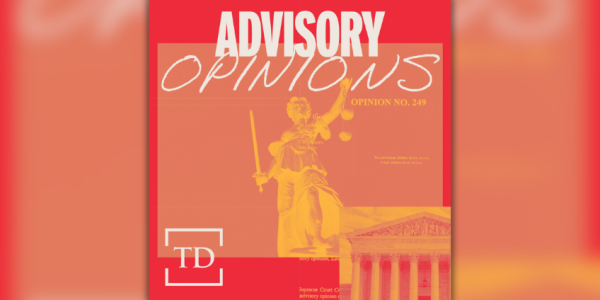We’ve run a few—maybe more than a few—articles here at The Dispatch about schooling in the age of COVID. Back in March, we’d hoped that it wouldn’t be necessary to cancel the rest of the school year. (We all know how that turned out.) But we’ve relied on experts to explain the risks of opening schools, and of keeping them closed. We had a teacher explain how it can be especially difficult for students with special needs to adapt to virtual learning. We’ve highlighted how teachers’ unions were fighting hard to keep schools closed, even at the expense of underprivileged students who are most at risk.
I’ll admit that when our district offered a choice between entirely in-person learning or entirely online learning (no hybrid model, no “start virtually and we’ll see how it goes” policy), we didn’t hesitate to sign up for in-person learning. We decided that was best for our kids.
I got a little nervous before we started—I saw the stories of high school students taking photos of crowded hallways full of maskless students. I worried that kids might be more susceptible and contagious than we thought, and we could be making a huge mistake. And I worried that we’d find ourselves stuck with intermittent online schooling featuring bad Zoom calls and confused students and frustrated teachers.
I got really nervous when, while taking the kids to a waterpark on what was supposed to be the last Friday of summer vacation, we got a text from the district saying school would be delayed for one more week. (I may or may not have purchased a cocktail that came in a plastic bucket. OK, I did. In my defense, it was a small bucket, and there was a lot of ice.)
I mention all this because our kids just finished their first quarter, and I thought I’d offer an update. While I’m superstitious and knocking on every wooden surface within reach, it exceeded my expectations. We live in a suburb that, for lack of a better way to put it, is home to more than a few COVID skeptics. Mask-wearing was uneven before the statewide mandate. My Facebook feed is full of people claiming their masks gave them asthma, that the pandemic isn’t serious, that 200,000+ deaths out of 8 million U.S. coronavirus cases just means you have very little risk.
We’ve either been good, or we’ve been lucky. We have about 4,000 kids in our district, and 80 percent or so chose in-person learning. Out of those 3,200-ish students, there have been fewer than 10 COVID cases since late August. There have been fewer cases with teachers or staff, and if you track the weekly dashboard the district provides, the teachers don’t seem to be getting it from the students (the handful of teachers who are out come from schools that had zero cases in the weeks preceding).
The accommodations have been sensible. Our high school and junior high have block scheduling—instead of six or seven classes a day, the kids have three or four. The classes are twice as long, and meet every other day. This reduces hallway traffic, as well as the number of kids exposed to one another. Lunch is socially distanced. Each kid has a plexiglass shield on their desk. Sports have continued but big gatherings like homecoming were canceled.
We live in a time where “normalcy” is something of a privilege. We all crave it, but none of us can feel normal all the time, or even most of the time. And we’re entering a very dangerous period as the weather cools, we’re forced indoors, and the things that kept us sane—outdoor dining, outdoor sports—will be less available to us.
It’s very possible that I could come to you in nine weeks, at the end of the next quarter, and share an entirely different tale. But in a year that would be bizarre even without a pandemic, and in which each week’s news cycle seems to out-crazy the previous week in terms of both quantity and quality, I’ll take two months of normalcy and be grateful. So I’ll let our staff and contributors explain the good, bad, and ugly of the past week.

Here you go:
David got a chance to watch the upcoming Netflix adaptation of J.D. Vance’s memoir, Hillbilly Elegy, and then afterward he had the opportunity to interview both Vance and director Ron Howard. The conversation was full of interesting revelations, like Vance’s account of watching the movie with his mother, who was portrayed by Amy Adams. “Amy spent a lot of time with my mom, who was very apprehensive about how she would be portrayed. Ultimately, she got comfortable with it—in part—because of Amy’s approach which gives [the audience] the woman, the story. It wasn’t that mom was a bad person. She was a person who went astray in important ways and, and kind of really struggled to find her way back to the straight and narrow.”
It’s report card time for Donald Trump, and Scott Lincicome is not an easy grader. In Capitolism (🔓),he gives the president a C on both fiscal policy and regulation, and even a B on jobs. But entitlements? D+. (“In Trump’s defense, he campaigned on not cutting Social Security or Medicare, so … promises kept, I guess. Congrats.”) Trade? D-. (“President Deals hasn’t actually been much of a dealmaker at all.”) And immigration? F. (“There are the inhumane detention policies; the travel ban; the Deportation Force; the ‘emergency’ blockades due to COVID-19 …”) Overall, Lincicome concludes: “These grades would prevent President Trump from graduating from Lincicome University (which has more rigorous standards than the SEC), but certainly require additional context.” Click through to see what he means.
President Trump’s Supreme Court nominee faced a considerable amount of scrutiny in the runup to her confirmation hearing this week: her religion, her brief tenure as a judge, even her choice, with her husband, to adopt two children from Haiti. One critique that was actually about her potential rulings came from Sens. Sherrod Brown and Elizabeth Edward and trickled into the progressive media: the claim that she’s anti-worker. Walter Olson reviewed her record, and has some disappointing news for her critics: There’s not much there there. “In discrimination claims, as commenters have pointed out, Barrett tends to take a fact-intensive approach, and has repeatedly upheld the claims of bias plaintiffs.” And when Barrett has ruled against employees who were contesting firings, there was usually a good reason.
The world has become well aware of the plight of the Uighur Muslims in Xinjiang province. The Chinese government has detained as many as 1 million Uighurs in what it refers to as “re-education camps,” claiming they are a national security threat. And now the CCP is deploying the same tactics against another ethnic minority, this time in Tibet. The excuse might be different—to eliminate poverty—but the tactics are the same. Charlotte Lawson writes: “The transformation of pastoralists and farmers into ‘rural surplus laborers’ serves the CCP’s end goal of eradicating poverty by providing them with a measurable income, even if it’s at a detriment to their overall quality of life. Many Tibetans who undergo training go on to enter predetermined menial labor occupations such as manufacturing, mining, construction, and driving.”
Now for the best of the rest:
-
In the G-File, Jonah highlights a flaw in the Democrats’ use of sympathetic stories in the Barrett hearings about people who have faced difficulties with our healthcare system. They’re making an argument for empathy, when the role of a justice is to interpret the law. “If the law is an ass, you go through the process of de-assifying it,” he writes. “You don’t read things into the law that aren’t there. Particularly if the ‘you’ in question is a judge.”
-
Speaking of health care policy, James P. Sutton looks at President Trump’s promises on preserving protections for those with pre-existing conditions in any new health care plan. He looks at the administration’s actions, and finds some contradictions.
-
We live in a time in which, alas, the president sometimes tweets or amplifies some crazy things. Sometimes, it’s harmless. Other times, like this week, he retweets baseless conspiracy theories. In this case, it was a claim that the Obama administration staged the raid on Osama bin Laden for political purposes and then had SEAL Team Six assassinated. Easily debunked as it is (um, the SEALs are still alive), it’s still dangerous. Tom Joscelyn explains in Vital Interests (🔓).
-
We didn’t have a debate this week, but we did have Sarah’s interview with former debate moderator Ann Compton in The Sweep (🔓). Compton first moderated a debate in 1988 and the stories she tells show how debates used to be very different. For example, she had only 48 hours’ notice the first time. Read all of the insightful—and many delightful—anecdotes.
On the pods: I’m biased because he’s a friend and former colleague, but you should definitely catch Will Saletan’s appearance on The Remnant. If you’re confused by that New York Post story about Hunter Biden and whether it has merit, Sarah and David discuss it on Advisory Opinions. And on The Dispatch Podcast, the gang discusses the Barrett hearings, court packing, and the Senate.
Photograph by Alex Edelman/AFP/Getty Images.








Please note that we at The Dispatch hold ourselves, our work, and our commenters to a higher standard than other places on the internet. We welcome comments that foster genuine debate or discussion—including comments critical of us or our work—but responses that include ad hominem attacks on fellow Dispatch members or are intended to stoke fear and anger may be moderated.
You are currently using a limited time guest pass and do not have access to commenting. Consider subscribing to join the conversation.
With your membership, you only have the ability to comment on The Morning Dispatch articles. Consider upgrading to join the conversation everywhere.